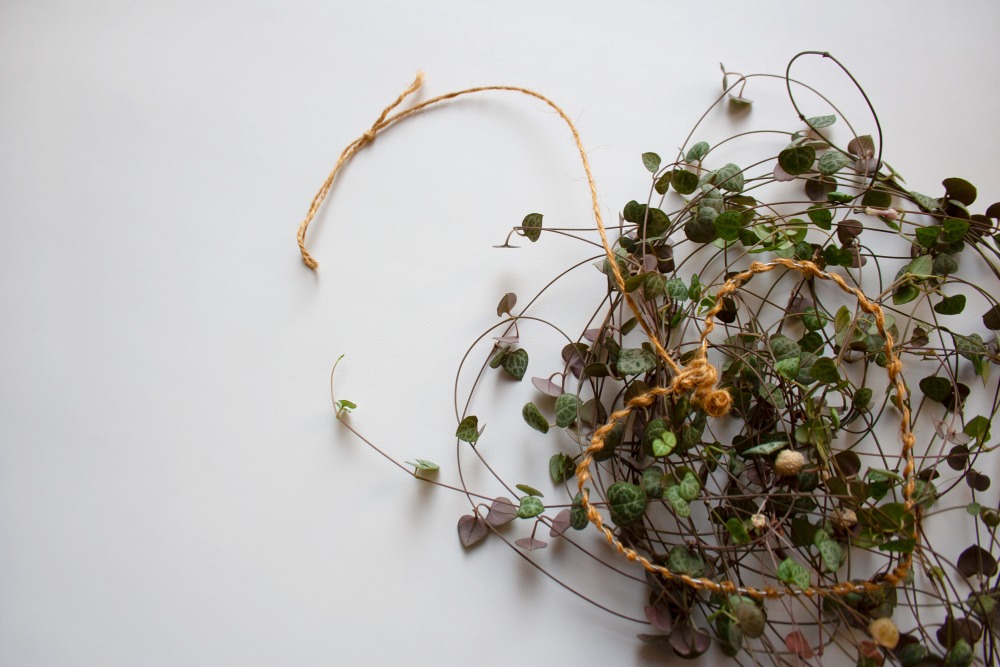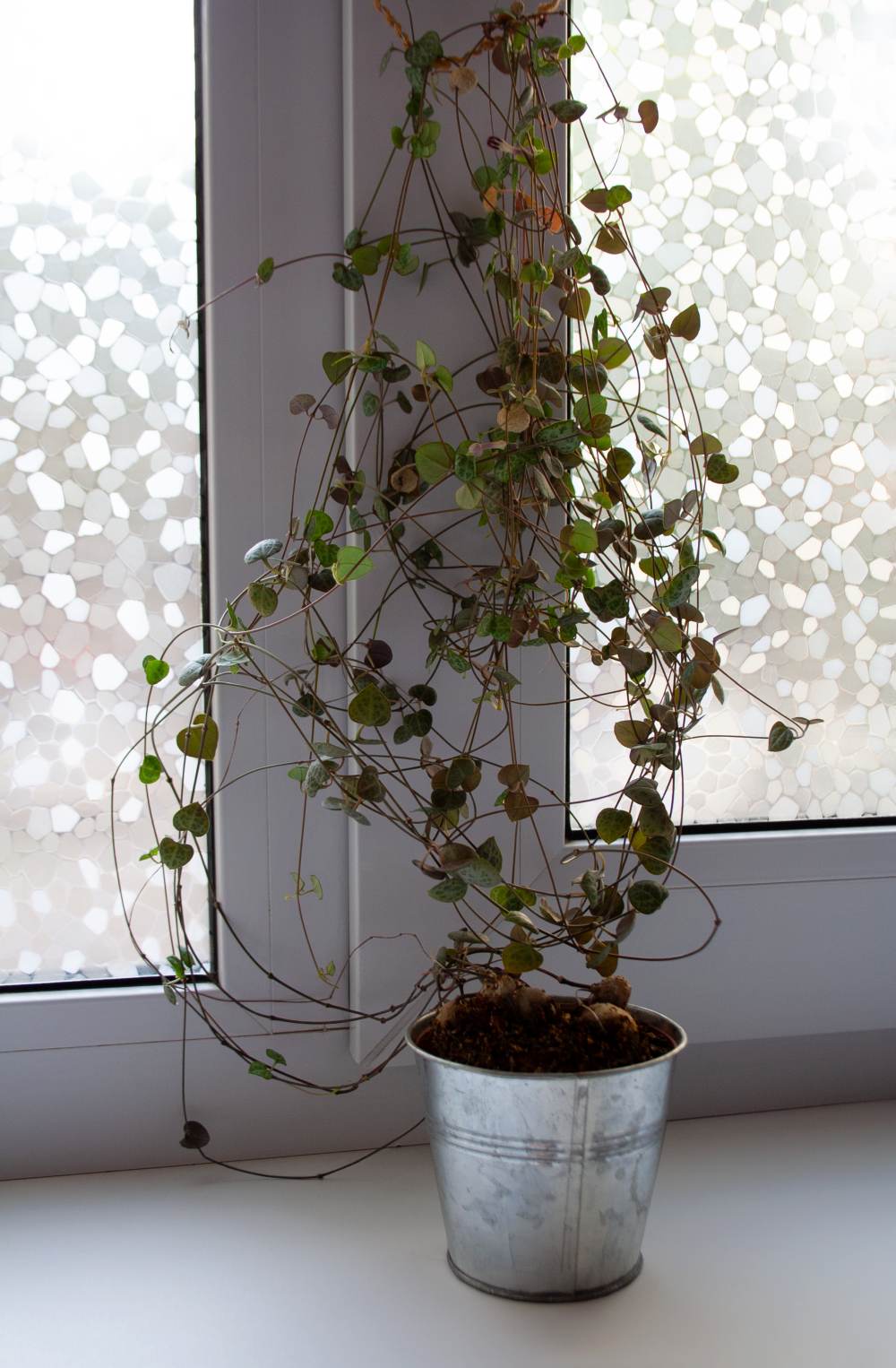Ceropegai Woodii Plant Care: How to Grow and Nurture Your String of Hearts
What’s not to adore about this trailing houseplant? The Rosary Vine, or if you like, String of Hearts, is one kind of a spellbinding plant with quite a stunning physique throughout all the seasons. These days, catching sight of a hardy plant and making it have thick strands of longevity, doesn’t need a darn ton of effort. All you need to check up on are the essential caring requirements that we’ll focus on in this guide.
Hard Facts About The Rosary Vine
One thing you’ll outrightly notice with almost all the succulents is they save water in their leaves to survive through the dry periods of the year, hence why most first-time gardeners confuse them for cacti plants. And the Rosary Vine is, quite considerably, no different. It’s, by far, a hardy houseplant with intense prospects to see better days without waning awfully. It sheds a few leaves when hit with harsh conditions, but the growth hormones would rapidly help the plant bloom new ones in quite a short span.
If you trace this succulent back to its family tree, you’ll learn that its scientific name is Ceropegia woodii, and the plant yields miniature leaves that nearly resemble hearts. And it’s no wonder why the houseplant is also labeled as the ‘String of Hearts‘ by a vast majority of households that seemingly have an acute interest in gardening. Ceropegias are natively from Africa and bloom fast under USDA hardiness zones 10 through 11.Other common names you might see in your closest gardening store include;
- Chain of Hearts
- Sweetheart vine
- Hearts Entangled
Throughout all seasons, this hardy succulent makes every effort to maintain elongated, stunning vines that spiral downwards—ideally when growing in a hanging container. During spring or the first few weeks of summer, it yields odorless flowers that look brownish pink and give your home a gleaming aesthetic which you won’t get enough of.
How Big Does The Rosary Vine Grow?
If you’re looking for a plant that grows twirling downwards from a hanging container all year round, then you might be tempted to adopt the graceful Rosary Vine. While this plant is in its optimal growth stages, it’ll highly likely produce long vines—each carrying a pair of heart-shaped leaves which are usually about 3 inches tall, right from the base of the stem. The vines, on the other side, can elongate further to roughly about 24 to 50 inches. And it’s no doubt why most Ceropegias are usually hanged somewhere on the walls or placed on a pedestal stand.With undeviating USDA hardiness zones 10 through 12, the Rosary Vine can bloom so rapidly when there’s ample access to natural light during summer. And while it might also be tempting to grow it outdoors, move it back in the house when the temperatures drop significantly.
Is it Tough To Grow The Rosary VIne?
Taking care of a feeble plant that would sensitively respond to any slight changes when it comes to the growing requirements, might seem like an overly intimidating task. But what you probably don’t know is this plant is constantly tough and remains in good shape even when the conditions are forcing it to see better days. And apart from the nurturing pointers which we’ll discuss right below in this guide, there’s nothing extra you’ll need to do.
Rosary Vine Care Tips
Soil & Transplanting
There are quite a bunch of needful requirements you need to keep pace with when it comes to making certain that your indoor succulent is growing in the most promising soil conditions. Most succulents, including the ever-charming Rosary Vine, grow wildly in a normal potting mix—preferably one with all the components suitable for cacti plants. So how do you make this kind of soil structure for your new houseplant? First, you need to mix sand with two parts of pumice and a portion of coco coir which is usually up for sale in most gardening stores.These two components would help the soil structure have an easy drainage process as well as retain the essential macronutrient properties for longer periods before the next transplanting session.
Don’t keep the soil too moist every time since the roots will begin to rot or have a mold coating that stunts the plant’s optimal growth.If I’m planning to grow the Rosary Vine in my house, I’d most likely end up choosing a clay pot with enough drainage holes at the bottom to allow excess water clear out in no time. The most fitting season to re-pot your plant is during spring when the growing conditions are up to scratch, and just in case it needs to rejuvenate some dead cells. During this season, the roots have formed a thick skin and will be capable of firmly holding the mother plant especially after the transplanting exercise.
When repotting your Sweetheart Vine be gentle not to damage the roots since they help absorb all the essential nutrients from the soil. I’d also highly recommend using worm castings since they are rich in organic matter which helps boost soil structure and aeration.
Light, Temperature & Humidity
Like many other succulents, the Rosary Vine can typically mutate to both hight and low light environments. But if you want it to have loud, dark, and overly-appealing foliage, then you’ll need to place the growing medium somewhere with bright, indirect light access, so the leaves don’t get scorched. You also need to keep it where the humidity is at a modest level. If possible, it should be around 40-50%, on average. And the surrounding temperature, on the other hand, needs to be anywhere between 18-27 °C. Anything below that would drastically ruin the plant’s rooting hormones, so the growth will end up stagnating for a solid period of time.
Watering & Feeding
Most first-timers go with the bland assumption that this plant barely needs any watering since it’s a succulent and has drought-resistant tendencies. But here’s the deal—your Rosary Vine will need more watering during spring and summer when the temperatures are warmer. Keep the soil moist during these two seasons. You need to be a little patient and wait for the soil to totally dry out in between the watering sessions.Avoid feeding your plant with fertilizer during winter since the growth hormones are usually inactive around this season due to the freezing conditions. The fertilizer should be all-purpose and soluble so your plant can absorb it much faster. On the face of it, this plant seems like a native succulent, but it’s actually not. The Rosary Vine is, however, resilient and capable of coping with rasping conditions, hence why you need to mimic the growing and nurturing tips for succulents.
Caring For The Rosary Vine Throughout The Seasons
There’s no debating that your plant will need a few adjustments from one season to another. And that’s because it’ll bloom under specific conditions which tend to lack mostly during winter.The two most gainful seasons that allow this impressive houseplant to bloom vigorously are summer and the first few weeks of autumn. You might spot a few flowers on your Rosary Vine around these two seasons. After this blooming phase, your plant will ease off during spring, so don’t expect so much when this season checks in.
When autumn is almost ending—that would be in November—keep it where the surrounding temperature is cool. It shouldn’t be warmer than 20°C and the plant needs so much indirect light around the last quarter of this season. You also want to avoid watering the plant too often or feeding it with any fertilizer during these times.And if you’re considering to transplant your Vine into a bigger container, that should be around the first month of spring( anytime around April). This would also be an ideal time to pluck off the dead leaves and vines from the parent plant.
You can also use this period to make a few cuttings for propagation if you’re looking to grow a few more in your garden or somewhere indoors. If all you care about is solid, tangible results, you’d see them throughout the spring season and the first few weeks of autumn. It’d be so beneficial to keep the medium near a window that’s facing south so it can get plenty of natural light, especially during the growing seasons.
How to Propagate Your Rosary Vine
One of the most yielding ways to propagate your Rosary Vine is through stem cuttings. And if this doesn’t strike you as the finest propagation method, you can use seeds that often grow as the base of the leaves.If you want to use the buds, just prepare the soil mixture we recommended earlier in this guide and tuck a few of them inside a medium-sized growing pot. Keep the medium under room temperature and gently water the soil, then wait to see some incredible results a few weeks later.
And if you’re propagating your Rosary Vine using cuttings you’ll just need to:
- Cut the stem from the base level of the main stalk of the mother plant.
- Make sure it has a few healthy leaves on it.
- Place it under natural light for a few hours so it can be sturdy enough to develop a firm rooting structure.
- Use sandy soil since it helps make the drainage process seamless.
Toxicity Levels
One cultured attribute about the Rosary Vine, compared to most other houseplants, is it holds zero toxicity levels.
Common Pests & Diseases
Most of the time, your Rosary Vine won’t be deteriorating due to serious pests and diseases, unless you’re not giving it the right nurturing requirements it desperately deserves. But the common pests you’ll occasionally have to deal with are mealybugs, root aphids, and spider mites. They all have this unwavering fetish for sucking the sap from the leaves and stems. Your String of Hearts might also fall sick, especially during summer if you’re not giving it enough light, or drenching the soil with too much water.So how do you deal with all these problems once and for all? For aphids, you can use natural soap to get rid of them. You can also spray your plant with neem oil to do away with mealybugs and scale.
Rosary Vine Benefits & Uses
So is adopting the Rosary Vine worth it? You might probably wonder. Well, while this variety might seem entirely unheard of, I must insist that it’s one of the most underrated houseplants that arent too dramatic when it comes to the needed caring efforts. Using this guide as your ultimate blueprint, you’ll find this plant so easy to grow and maintain throughout all the seasons.You might also be probably wondering if your vine will survive long enough to become the villain of all houseplants in your home. Well, rest aroused knowing that the mother plant will have a stong longevity streak so long as you give the basic requirements it needs across the different seasons.


